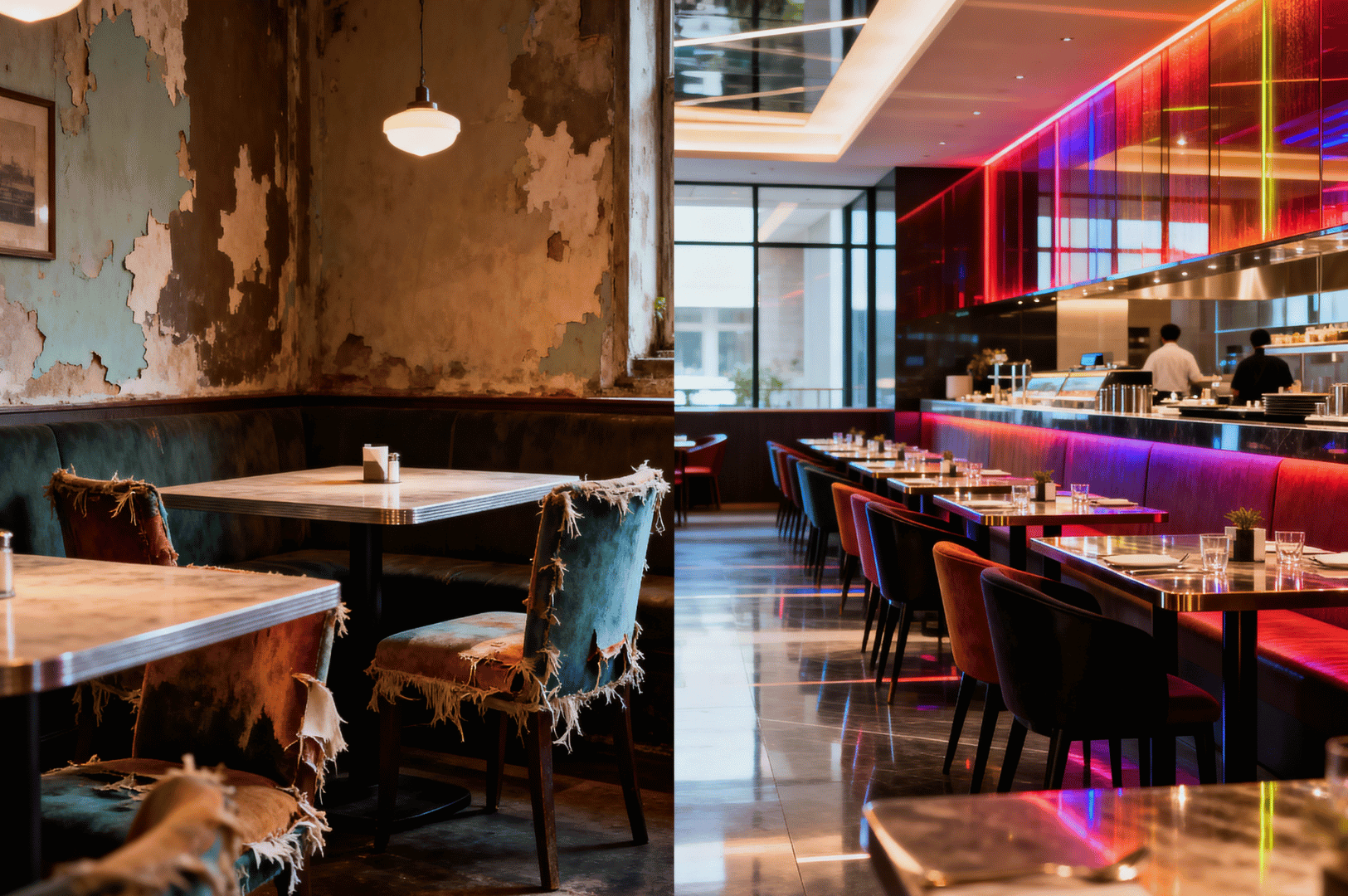Planning a restaurant renovation in Singapore is a pivotal moment for any business owner seeking to maintain competitiveness and deliver outstanding customer experiences. According to recent industry data, the average cost for basic restaurant renovation in Singapore ranges from S$600 to S$1,200 per square meter (approximately S$56–S$112 per square foot), while high end projects can easily exceed S$2,500 per square meter. Strategic allocation of your restaurant renovation budget will help control renovation costs, maximize ROI, and ensure every dollar contributes to achieving business goals.
Allocating your budget wisely is crucial—not only to minimize downtime but also to maximize impact in your dining area, meet design and safety regulations, and stay compliant with the latest government requirements. In Singapore’s fast-paced and highly competitive commercial F&B sector, the right renovation plan can be the key differentiator that sets your restaurant apart. This guide outlines the key factors and actionable steps for strategic renovation budgeting to deliver the best possible returns.
Assessing Your Restaurant Renovation Needs: Key Factors for Success
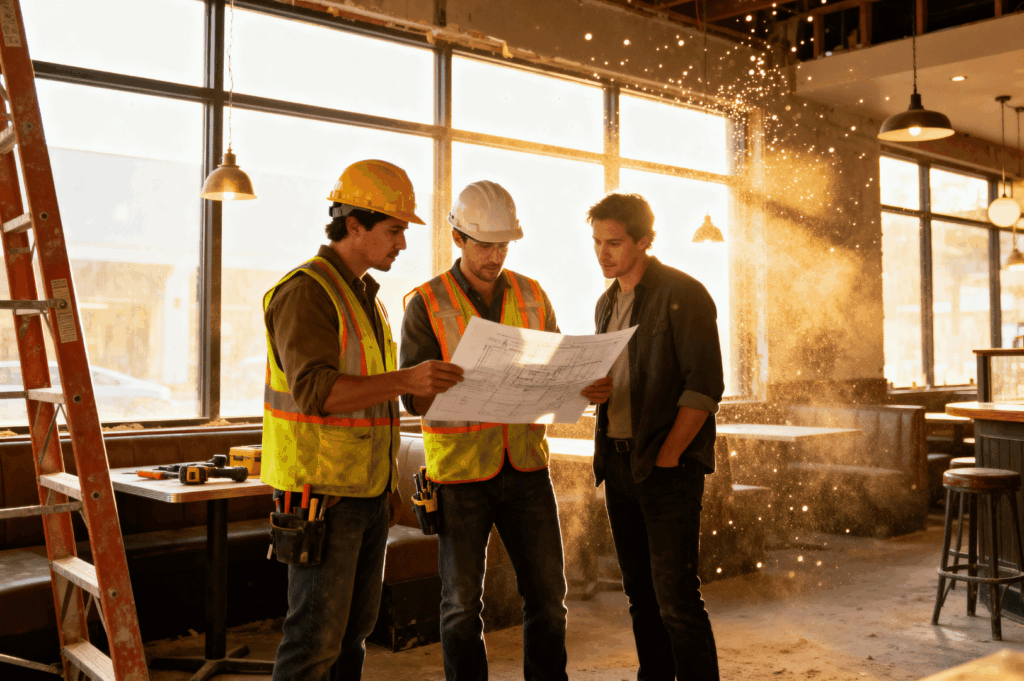
Every successful renovation starts with a realistic assessment of your space, budget, and priority areas. Planning ahead can help you anticipate costs and avoid unnecessary mid-project changes.
Key Steps:
Assess Operational Flow: Analyze kitchen and waiting areas. A poor layout or cramped kitchen can hurt staff efficiency and increase renovation costs if not addressed early.
Comprehensive Walkthrough: Evaluate your restaurant’s size, current interior design, and existing systems. Consider the amount of space available and how well it currently serves both staff and customers. Get feedback from staff about workflow and customer experience pain points.
Compliance & Fire Safety: Review compliance requirements, including SFA and URA guidelines, as well as current fire safety systems and emergency exits. Addressing these early avoids costly issues later.
Identify High-Impact Areas: Differentiate between repairs required for compliance (e.g., plumbing, electrical, or fire safety) and visual or functional upgrades (e.g., flooring, lighting, furniture). Prioritize aspects that will have the greatest customer and operational impact.
Restaurant Renovation: Creating a Tiered Budget Approach
Tiered budgeting for your restaurant renovation is a proven way to allocate resources effectively and maximize ROI, regardless of project size.
Tier 4: Branding and Luxury — Allocate towards elements like custom lighting, designer furniture, or signature features. Luxury touches may cost more up-front but can be game-changers for a high end restaurant.
Tier 1: Essential Renovation — These must-do items include structural repairs, compliance with fire safety and health codes, and SFA-mandated upgrades. Skipping these could shut down your business or result in regulatory fines.
Tier 2: Experience-Enhancing Renovation — Focus funds on the entrance, dining area, and restrooms where customers spend most of their time. Strategic upgrades here improve ambiance and customer satisfaction.
Tier 3: Operational Efficiency — Invest in commercial kitchen layout adjustments, equipment, and staff areas to streamline workflow, reduce time per order, and cut costs in the long run.
Renovation Costs per Square Foot: The Basics
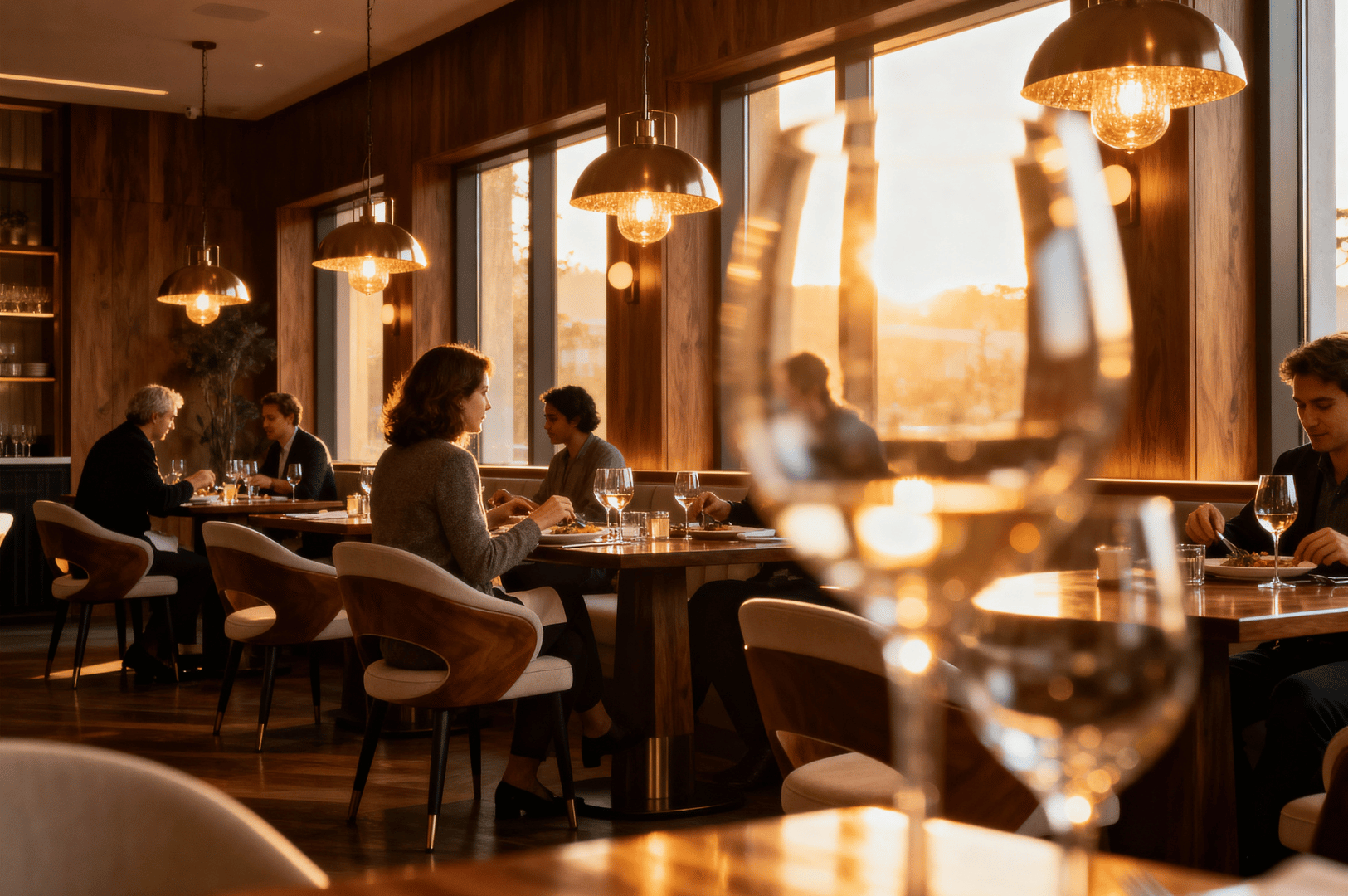
Understanding the average cost breakdown for a restaurant renovation in Singapore is vital for effective planning.
| Renovation Type | Cost in Singapore (per square foot) | Features |
|---|---|---|
| Basic | S$56–S$112 | Painting, lighting, minor furniture upgrades |
| Mid Range | S$112–S$232 | Flooring, bathroom upgrades, new fixtures |
| High End | S$232+ | Designer finishes, custom elements, full gut |
Tip: Price per square foot can vary depending on design complexity, materials, and required compliance upgrades.
Interior Design & Dining Area: Maximizing Visual and Functional Impact
The dining area is where your investment visibly pays off. Budget allocation to interior design must align with your target customer’s expectations and your brand’s image.
Layout Complexity: An open layout may cost less in partitions, but complex layouts with custom booths or private rooms will increase the per square foot renovation cost.
Furniture: The average cost for high-quality commercial furniture in Singapore ranges from S$150–S$400 per seat. Invest in easily cleanable, durable options.
Lighting: The right lighting elevates ambiance and reduces eyestrain. Consider dimmable lights in the dining room and brighter task lighting near the bar or kitchen pass.
Flooring: Choose materials that are durable and slip-resistant (ceramic tiles, high-quality vinyl, etc.). The latest designs can simulate wood or stone looks at lower cost.
Back-of-House Budget Considerations: Kitchen and Operations
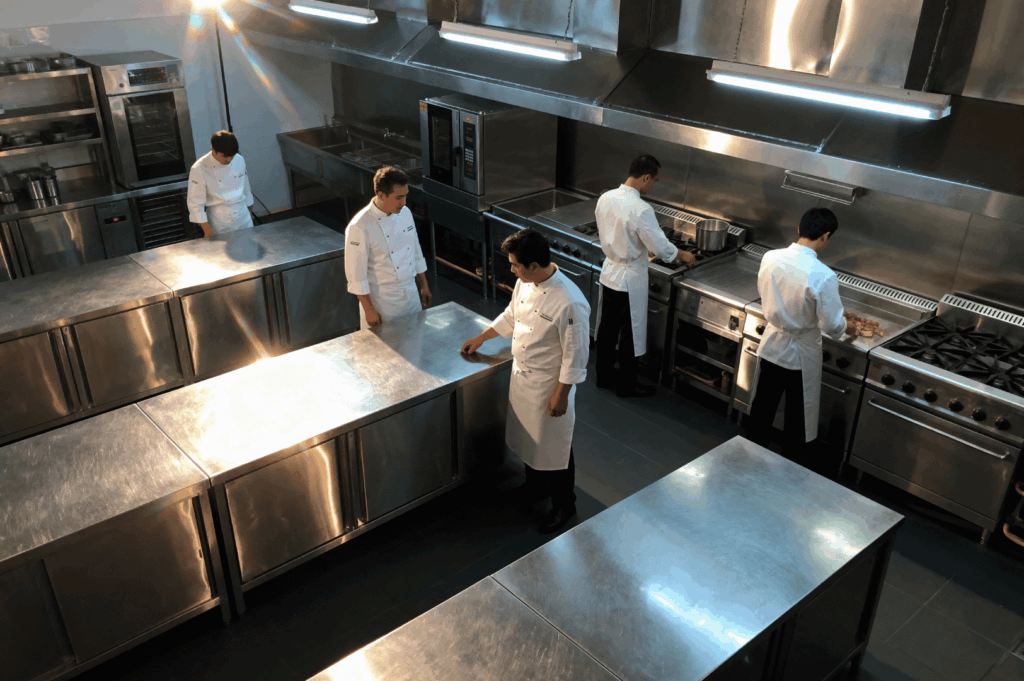
The kitchen is the heart of any restaurant, and its design will impact workflow far more than aesthetics alone.
Utilities: Upgrading to water- and energy-efficient systems can provide steady savings every month.
Commercial Kitchen Layout: A smart layout minimizes unnecessary movement and maximizes safety and speed. Consider space-saving equipment and modular systems for future flexibility.
Equipment: Invest in energy-efficient or smart appliances. While these may cost more initially, they can significantly reduce utility bills over time.
Staff Areas: Comfortable staff rooms, lockers, and safe storage systems help with retention—and are often overlooked.
Storage: Use vertical storage and custom shelving. Good storage solutions save space, reduce time spent looking for items, and keep work areas clear.
Key Factors Influencing Restaurant Renovation Costs
A range of variables can impact your restaurant renovation costs, including:
Timeframe: Tight schedules (after hours or expedited work) increase labor costs.
Size and Floor Area: Larger spaces have higher material and labor costs.
Design Complexity: Custom interior design, curved walls, and special finishes add to the budget.
Material Choices: High end, imported, or custom-made materials will drive up costs.
Compliance & Permits: Building permits, fire safety upgrades, and compliance fees may add significant expense.
Contractor Selection: The experience and reputation of contractors can affect both the cost and quality of the renovation.
Strategic Renovation Cost-Saving Approaches
- Phase the Project: Staged renovations keep the restaurant operating, preserving cashflow.
- Repurpose vs. Replace: Retain quality furniture or fixtures by updating finishes or upholstery.
- Negotiate: Get multiple contractor bids and use them to negotiate better terms.
- Bulk Buys: Purchasing materials and equipment in bulk often leads to discounts.
- Materials Matrix: Compare options based on price, durability, and ease of maintenance.
High End and Mid Range Investments: Where to Allocate for Maximum ROI
Data shows that investments in lighting, kitchen efficiency upgrades, and visible interior design features offer the highest ROI. Energy-efficient appliances and smart POS systems can pay for themselves within 2–3 years. Signature design elements create buzz and can justify higher menu prices for high end concepts.
Hidden Costs to Include in Your Restaurant Renovation Budget

- Permits, Fees, and Compliance: Budget for SFA, URA, BCA, and fire safety application fees.
- Revenue Loss: Calculate the cost of days closed during renovation. Minimize this by renovating during slow periods or planning partial closures.
- Contingency: Always add 15–20% on top of estimated project costs for unexpected expenses.
- Post-Renovation Marketing: Announce your updated space with social media ads, reopening events, or influencer promotions.
Financing Your Restaurant Renovation
- Renovation Loans: Explore business loans from major Singapore banks.
- Government Grants: Enterprise Singapore and other agencies provide grants for qualified renovations.
- Alternative Financing: Peer-to-peer lending or private investment may help supplement shortfalls.
- Tax Deductions: Renovation and refurbishment (R&R) costs can be tax-deductible. Consult an accountant for details.
Case Studies: Maximizing Your Restaurant Renovation Budget
- Small Budget (Under S$50,000): A mid range café focused spending on repainting, lighting, and seating, resulting in a 20% footfall increase post-renovation.
- Medium Budget (S$50,000–S$150,000): A casual dining brand invested in streamlined kitchen layout and technology upgrades, reducing order times and boosting staff productivity.
- Large Budget (S$150,000+): A high end restaurant revamped its full interior design and added custom bar elements, raising average order size and media visibility.
| Budget Size | Key Focus Areas | Notable Results |
|---|---|---|
| <$50,000 | Dining, lighting | Increased footfall, improved ambiance |
| $50K–$150K | Kitchen, tech | Faster orders, lower staff turnover |
| >$150,000 | Brand, custom ele. | Brand buzz, higher check size, media attention |
Conclusion: Action Steps for Your Restaurant Renovation Budget
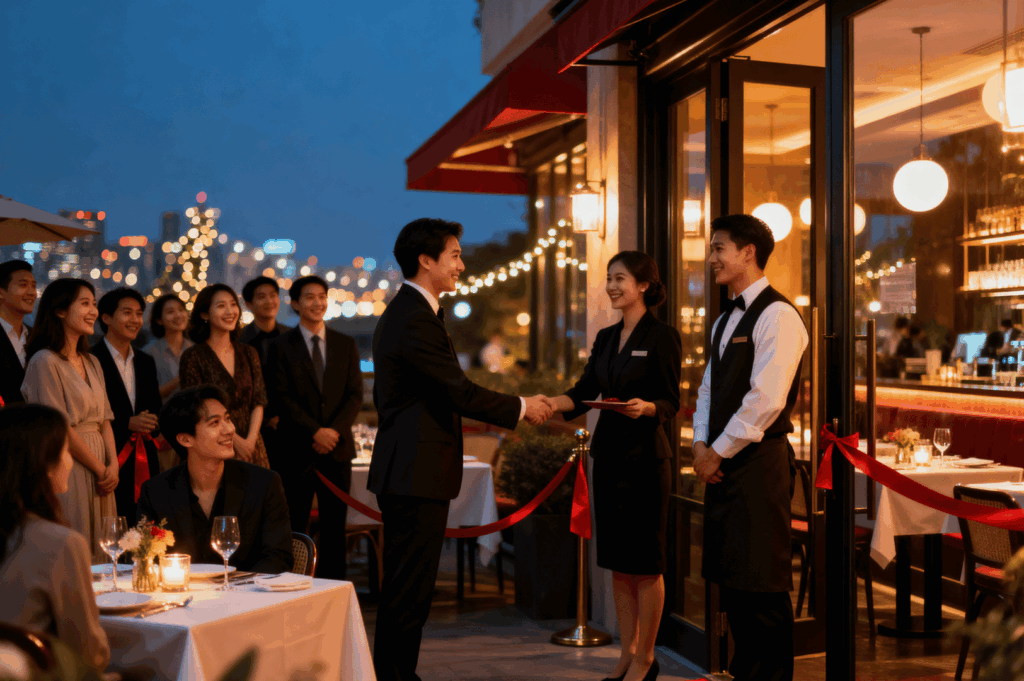
A well-structured restaurant renovation budget is your guide to a profitable, efficient, and resilient business. Prioritize spending, invest in visible and functional improvements, and always keep a contingency fund for hidden costs.
Next Steps:
- Assess and Plan: Use this guide to analyze your needs, space, and operational requirements.
- Get Multiple Quotes: Talk to contractors and design firms experienced in restaurant renovations.
- Track ROI: Monitor key metrics—customer count, average check, and operating costs—after project completion.
- Consult Experts: For significant projects, get advice from interior designers, compliance consultants, and accountants.
Approach your restaurant renovation informed and ready, and you’ll maximize every Singapore dollar for the greatest possible business success.
